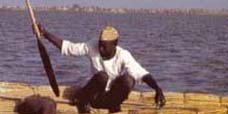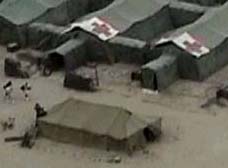2004.02.25: February 25, 2004: Headlines: COS - Marshall Islands: Nuclear Testing: Speaking Out: Honolulu Weekly: The largest nuclear bomb in U.S. history still shakes Rongelap Atoll and its displaced people 50 years later
Peace Corps Online:
Directory:
Marshall Islands:
Peace Corps Marshall Islands :
Peace Corps Marshall Islands: Newest Stories:
2006.06.30: June 30, 2006: Headlines: COS - Marshall Islands: Nuclear Testing: Speaking Out: San Francisco Chronicle: Rick Asselta was sent to the Marshall Islands as a Peace Corps volunteer to help comfort islanders whose homes and lives were destroyed by the testing of 7 nuclear weapons at Bikini and Enewetak from 1946 and 1958 :
2004.02.25: February 25, 2004: Headlines: COS - Marshall Islands: Nuclear Testing: Speaking Out: Honolulu Weekly: The largest nuclear bomb in U.S. history still shakes Rongelap Atoll and its displaced people 50 years later
The largest nuclear bomb in U.S. history still shakes Rongelap Atoll and its displaced people 50 years later

Within days of the Bravo shot, irradiated islanders were unwittingly swept into a top-secret effort to research the effects of radioactive fallout on humans. 'Never before in history had an isolated human population been subjected to high but sub-lethal amounts of radioactivity without the physical and psychological complexities associated with nuclear explosion,' said scientist Neal O. Hines. Islanders would not learn the true nature of the experiment for 40 years, until 1994, when President Clinton ordered thousands of documents declassified in the wake of a national scandal involving human radiation experiments.
The largest nuclear bomb in U.S. history still shakes Rongelap Atoll and its displaced people 50 years later
Shot in the Dark
The largest nuclear bomb in U.S. history still shakes Rongelap Atoll and its displaced people 50 years later
Beverly Deepe Keever
February 25, 2004
Almira Ainri was 10 years old when she was catapulted into the atomic age.
In June of 1946, as the U.S. Navy readied the first atomic bomb in peacetime — just the fourth in history — Ainri and about 100 other inhabitants of Rongelap Atoll, in the Marshall Islands, were sent south by ship to Lae Atoll, where it was thought they would be safe from the effects of the explosion 100 miles away, at Bikini Atoll.
Eight years later, in 1954, Ainri and other Rongelapese weren’t as lucky.
Fifty years ago this week, on Bikini Atoll, the U.S. detonated the Bravo shot, a 15-megaton hydrogen bomb 1,000 times more powerful than the bomb it dropped on Hiroshima.
The most powerful bomb in U.S. nuclear history, Bravo had a radioactive cloud that plumed over 7,000 square miles, an area about the size of New Jersey. A hundred or so miles downwind, near-lethal fallout powdered at least 236 inhabitants of the Rongelap and Utrik atolls, contaminating their ancestral homelands. The Bravo-dusted islanders entered history as unique examples of the effects of radioactive fallout on humans.
Ainri, who now lives in Honolulu, is one of 118 survivors of the Bravo shot. For her and other islanders, the bomb’s detonation set off a chain reaction of events over the last half century. They became unwitting subjects in secret U.S. research on the effects of nuclear fallout and ultimately were forced to leave their idyllic homeland, which remains uninhabitable to this day due to radioactivity.
Archeological finds on Bikini Atoll suggest that the first Micronesians likely arrived in the Marshall Islands between 2,500 and 4,000 years ago. Germany annexed the islands in 1885. Japan captured them in 1914. Allied forces captured and occupied them in World War II; the war’s end left them in U.S. hands. The U.S. began nuclear testing there the next year.
The Marshall Islands were declared a Trust Territory by the United Nations in 1947, with the U.S. as the administrator, an arrangement that did not end until 1991. The following treatment of the irradiated islanders raises doubts about the behavior of the U.S. government:
U.S. officials failed to evacuate Ainri and other islanders before the Bravo shot and then delayed their removal for more than 50 hours after the fallout.
On March 7, 1954, six days after the Bravo shot, Project 4.1, 'Study of Response of Human Beings Exposed to Significant Beta and Gamma Radiation due to Fallout from High Yield Weapons,' established a secret U.S. medical program to monitor and evaluate islanders exposed to radiation, turning them into experimental human subjects without their consent.
Ainri and other islanders were allowed to return to their irradiated homeland in 1957. It was later deemed unsafe for human habitation.
Marshall Islanders were injected with or fed radioactive tracers without their consent, contrary to medical recommendations made by U.S. medical officers six weeks after the Bravo shot that the islanders should receive no more exposure to radioactivity in their lifetimes.
The research projects arising from Bravo were begun just seven years after war crimes tribunals convicted German medical officers for their horrific experiments with concentration camp inmates during World War II. Those tribunals led to the Nuremberg Code, an international standard for experiments involving human subjects, which stipulated that the voluntary consent of the subject 'is absolutely essential.' The U.S. Atomic Energy Commission established similar standards, requiring the consent of human subjects and the expectation that an experiment would benefit the subject, but they had little distribution or effect in the U.S. bureaucracy.
Did U.S. bureaucratic bungling and operational obstacles cause the mistreatment of the islanders or, as so many islanders and others say, did U.S. officials make the islanders guinea pigs to study the effects of radioactivity?
‘Like needles over
my whole body’
At about 6 a.m. on March 1, 1954, Almira Ainri was awakened by the brightness and noise of an inferno as hot as the core of the sun. Ainri was 18 then, married, and pregnant with her first child.
The island shook, she recalled. The air was gray. Snowlike particles fell from the sky.
A day later, U.S. soldiers with Geiger counters arrived and found people of Rongelap weak and vomiting. Fifty hours and more after Bravo’s detonation, the 236 inhabitants on or near Rongelap and Utrik atolls were evacuated to the military clinic at Kwajalein Atoll. There, they were scrubbed every day with special soaps. The pressure of the water on Ainri’s blistered skin felt 'like needles over my whole body,' she said — 'like I was burning.'
After the blast, Ainri gave birth to a son, Robert. His thyroid glands were so damaged that he became dwarfed. The glands were later removed, consigning him to a lifelong regimen of medication. Ainri got pregnant again and gave birth, she said, to 'a bunch of grapes, that had to be pulled out of me.' Twice more Ainri got pregnant, she said, and gave birth to children who appeared normal but died several days later. Another son, Alex, survived, but again with damaged thyroid glands. Ainri herself has thyroid problems; two new growths recently appeared there.
The suffering of Ainri and her family is hardly unique. Within a decade of the Bravo shot, more than 90 percent of the children who were under 12 years old at the time of the explosion developed thyroid tumors. Today, Marshall Islanders have one of the world’s highest rates of abnormalities of the thyroid, which often result in cases of retardation, cretinism and stunted development.
For these and other conditions that the U.S. government presumes were caused by its nuclear weapons testing, the U.S. pays compensation. Those with leukemia or cancer of the esophagus, stomach, small intestine, pancreas or bone are awarded $125,000. Islanders with severe growth retardation due to thyroid damage get $100,000.
By the end of 2002, a U.S. trust fund had paid about $79 million to 1,808 islanders, but because the trust fund could not cover all its obligations, 46 percent of affected islanders died before they were fully paid for their injuries.
Rongelap Atoll comprises 61 islets with a combined land mass of about three square miles and a lagoon of 388 square miles. Because it is still too radioactive for humans, its former residents are scattered. In Honolulu, Ainri lives in a home where her pandanus floor mats mingle with a caller-I.D. phone and a television set.
Under a 1996, $45-million agreement with the U.S., projects are underway to prepare for the return of Rongelapese to the five southernmost, least-contaminated islets of the atoll. A glisteningly white church has been refurbished, complete with striking lapis trim. An airstrip, desalinization plant, field station, power plant and docks have been constructed or installed. Phase 2 calls for the construction of 50 four-bedroom homes, a dispensary and a hospital, school building, residences for doctors and teachers, a library, a town hall and a municipal building. All that is missing is a date when the resettlement will occur.
The three surprises
Corporal Don Whitaker hardly could have imagined the worldwide surprise his letter home would create. Writing to his hometown newspaper, in Cincinnati, in March 1954, Whitaker told of seeing distraught Marshall Islanders arrive at a navy clinic on Kwajalein after the Bravo shot. It was one of three surprises that shocked the world, and members of President Eisenhower’s administration.
The first surprise was the magnitude of the Bravo bomb’s blast. Its 15-megaton yield was more than twice what U.S. officials had expected. Set off from Bikini Atoll, it vaporized three of the atoll’s 23 islets. The test was expected, however.
Whitaker’s letter was the next surprise. In it, he revealed the evacuation of islanders that U.S. officials had tried to keep secret. Published March 9, eight days after the blast, Whitaker’s letter prompted the Atomic Energy Commission to issue a press release the next day, masking the magnitude of the Bravo shot and its radioactive effects with a bland announcement. But Bravo was hardly the 'routine atomic test' the release described, and the phrase 'some radioactivity' did not come close to describing the islanders’ dosage, which was the equivalent of the amount received by Japanese citizens less than two miles from Ground Zero at Hiroshima, lawyer-historian Jonathan M. Weisgall writes.
Twenty-eight years later, the U.S. Defense Nuclear Agency would call the Bravo shot 'the worst single incident of fallout exposures in all the U.S. atmospheric testing program.'
The third surprise came just days after the AEC had assured the public that the irradiated islanders were fine. A Japanese tuna trawler, the No. 5 Fukuryu Maru ('Lucky Dragon'), was 112 miles east of Bikini Atoll at the time of the Bravo explosion, well outside the danger zone announced by U.S. officials. Yet Bravo’s staggering detonation powdered the boat’s 23 crew members with what is known in Japan as shi no hai — 'ashes of death.' When the Fukuryu Maru reached its home port of Yaizu, about 120 miles south of Tokyo, on March 14, the crew was suffering from a radiation sickness that stunned the world.
The crewmen’s sickness and the subsequent panic over radioactive tuna in the U.S. and Japanese fish markets led to an international furor. The Japanese government and people dubbed it 'a second Hiroshima' and it nearly led to severing diplomatic relations. A U.S. government doctor dispatched to Japan blamed the Japanese press for exaggerating the condition of the fishermen, who, he predicted, would recover completely in about a month.
Six months later, Aikichi Kuboyama, the 40-year-old radio operator of the Fukuryu Maru, died. He was 'probably the world’s first hydrogen-bomb casualty,' said The New York Times.
It was this triple-play of surprises — Bravo’s tremendous force, Whitaker’s letter and the plight of the Fukuryu Maru — that chinked the U.S. government’s usual policy of secrecy. Instead, the word fallout entered the world’s lexicon. For the first time, people in Japan and Russia, London and Bonn, New York and Milwaukee, were aware of a danger that could not be smelled, seen, felt or heard.
‘The sun rising in the west’
The Bravo shot was the first U.S. hydrogen device that could be delivered by airplane. It was designed to catch up with the Soviets who, in August 1953, had exploded their first hydrogen bomb deliverable by aircraft.
The Bravo shot was so dangerous that it could not be detonated in the continental United States. Nor could it be set off at Enewetak Atoll, where the U.S. conducted nuclear blast tests from 1948 to 1958, for fear it would wipe out the extensive U.S. equipment and installations there. So it was tested at Bikini Atoll.
Even before the Bravo shot, experts knew that the radioactive dust of atmospheric nuclear weapons explosions was invisibly and unknowingly powdering the continental United States and touching others worldwide. The U.S. government’s failure to move the Rongelap and Utrik Islanders in advance of the Bravo shot is painfully ironic because Almira Ainri and other Rongelapese had been moved before the first peacetime atomic test, in 1946 — and Bravo was 1,000 times more powerful. Yet the islanders were not moved in 1954 because of 'the high cost and logistic problems… in supporting such an operation,' according to U.S. medical officers.
Six hours before Bravo, U.S. officials knew that the winds had shifted, putting Rongelap and Utrik Islanders in the path of fallout, but they proceeded with the detonation anyway. That knowledge, coupled with the lag of several days after the detonation before islanders were evacuated, led to speculation that the U.S. deliberately used the islanders as guinea pigs.
A month after the Bravo shot, Atomic Energy Commission chair Lewis Strauss told reporters that allegations that the evacuation of the Marshall Islanders had been deliberately delayed were 'utterly false, irresponsible and gravely unjust to the men engaged in this patriotic service.' He also said that he had just visited the islanders at the Kwajalein clinic and they 'appeared to me to be well and happy.'
Bravo was detonated at 6 a.m. Within four hours, the 28 U.S. weathermen on Rongerik Atoll, in the Marshall Islands, saw a mist from the blast. Seven hours later, the needle of their radiation-measuring instrument went off the scale. They were evacuated the next day.
Clouds of snowlike particles moved over Alinginae, Rongelap, Utrik and Ailuk atolls. The clouds deposited radioactive fallout on the people below and irradiated them with doses of 'cloud shine,' radiation produced by the blast itself, which Rongelapese described as being like 'the sun rising in the west.'
About two-thirds of the Rongelapese were nauseated for two days, according to a U.S. medical officer who examined them a week after Bravo. Roughly one in 10 were vomiting and had diarrhea. Some had itching, burning skin that turned into black-pigmented areas and lesions, some of which became ulcerated and infected. Hair fell out. Blood counts fell.
The Bravo-dusted islanders disappeared from the news for the next year, because of the AEC’s clampdown on information. But if they were not making news, they were making medical history.
Testing, testing
Within days of the Bravo shot, irradiated islanders were unwittingly swept into a top-secret effort to research the effects of radioactive fallout on humans. 'Never before in history had an isolated human population been subjected to high but sub-lethal amounts of radioactivity without the physical and psychological complexities associated with nuclear explosion,' said scientist Neal O. Hines. Islanders would not learn the true nature of the experiment for 40 years, until 1994, when President Clinton ordered thousands of documents declassified in the wake of a national scandal involving human radiation experiments.
Four months before the Bravo shot, a then-secret U.S. document listed research Project 4.1 among 48 tests to be conducted during and after the explosion. '(D)ue to possible adverse publicity reaction, you will specifically instruct all personnel in this project to be particularly careful not to discuss the purposes of this project and its background or its findings with any except those who have a specific ‘need to know,’' the document said.
The purpose of Project 4.1 was to study the effects of fallout radiation on human beings.
Three days after Bravo, Project 4.1 began to unfold in Washington, D.C., where top medical officials decided that the victims of its hazardous debris would be appropriate research subjects. A week after the blast, 25 officials of the AEC’s medical program arrived at Kwajalein Atoll. Six weeks after the blast, Project 4.1 workers recommended a lifelong study of the affected islanders. After thyroid nodules began to appear on Rongelapese and Utrik islanders in 1963, they were studied every year.
They began to complain that they were being treated like guinea pigs rather than sick humans needing treatment. A doctor who evaluated them annually came close to agreeing when he wrote, 38 years after Bravo, 'In retrospect, it was unfortunate that the AEC, because it was a research organization, did not include support of basic health care of populations under study.'Return to Rongelap
In 1957, U.S. officials assured Rongelapese that their homeland was safe and returned them there. Upon their return, U.S. medical officers shifted the emphasis of their study to what researchers who studied the documents released in the 1990s described as 'the formation of an integrated long-term human environmental research program to document the bioaccumulation of fallout and the human effects of this exposure.' In sum, U.S. officials knew they were placing the Rongelapese in a radioactive environment, even though the islanders had already sustained more than a lifetime’s worth of radiation.
A 1982 U.S. Department of Energy report indicated that some inhabited areas of Rongelap were as contaminated as the parts forbidden to humans. It was the first report prepared for the Rongelapese in their own language and it shocked them. 'All we needed to see was the center fold-out and our worst fears were confirmed!' Marshall Islands Senator Jeton Anjain told the U.S. Senate Committee on Energy and Natural Resources in 1991.
Rongelap, their principal island of residence since their 1957 return, had been assigned a level '3' of contamination, meaning it was unsafe for human habitation.
In 1984, Rongelapese representatives asked the U.S. to evacuate them. The U.S. refused.
The next year, the Rongelapese left anyway. 'It was by no means an easy decision, for our people knew that it might mean they and their children would never again know life on their ancestral homeland of the last 4,000 years,' Anjain told the U.S. Senate committee.
'But the safety of our children and the unborn was more important.'
After living on radioactive Rongelap for 28 years, 70 islanders were moved by Greenpeace to Majetto Island, 100 miles away. Confirming their fears, a 1988 study authorized by the U.S. government and subsequent official testimony recommended that part of Rongelap Atoll be considered 'forbidden' territory and that the remaining part would be safe only if inhabitants ate imported food for the next 30 to 50 years.
‘The only thing I could think of was Nazi Germany’
Residents of Rongelap and Enewetak atolls were also used in human radiation experiments involving radioactive tracers of tritiated water and chromium-51 injections, Marshall Islands Foreign Minister Phillip Muller told the U.S. Senate Committee on Governmental Affairs in 1996.
The U.S. Department of Energy withheld critical information about the adverse effects of U.S. weapons tests from the U.S. Congress and Marshallese officials, Muller said, and medical research without the consent of Marshallese subjects continued.
Marshallese Senator Tony de Brum told the committee that U.S. doctors 50 years ago pulled healthy as well as unhealthy teeth of islanders without their consent, for use in cesium, strontium or plutonium studies. Even in the mid-1990s, islanders were unsure whether they were being cared for or studied by U.S. medical personnel, de Brum said.
In 1999, Muller’s allegations of human radiation experiments were confirmed by the Department of Energy, the successor agency of the Atomic Energy Commission. Declassified documents showed that U.S. officials included the irradiated islanders under the umbrella of its extensive biological program. Its worst known cases included x-raying the male organs of Oregon and Washington state prisoners, feeding radioactive fallout materials to university students, giving small doses of radioactive iron to pregnant women and feeding Quaker Oats laced with radioactive traces of iron and calcium to supposedly mentally retarded boys in a Massachusetts state home. Upon first learning about these kinds of experiments in 1993, Energy Secretary Hazel O’Leary said, 'The only thing I could think of was Nazi Germany.' Who will pay?
Under the U.N. Trusteeship, the U.S. government was to prepare the people of the Marshall Islands for self-government. In 1986, President Reagan signed the Compact of Free Association after its ratification by the Marshall Islands government and Congress. Its provisions expired in 2001. New provisions for the compact were agreed upon earlier this year, but they are silent on U.S. funding that has since become inadequate to cover the spiraling claims of those harmed by U.S. nuclear weapons testing, including Bravo’s fallout.
There may be a ray of hope for the Marshallese, however. The compacts say that nuclear testing damages to persons or property discovered after the original 1986 agreement can be covered in a new request to the U.S. Congress with documentation that circumstances have changed.
One changed circumstance is that the U.S. government did not disclose to the Marshallese government the yield of 44 of the 66 U.S. nuclear weapons tests detonated in its republic until 1993. The next year, a comprehensive list of 1,054 U.S. nuclear weapons tests worldwide and their yields was made public by the Department of Energy. It shows that the yield of 82 tests in the U.S.-administered Bikini, Enewetak and Johnston Atolls and Pacific waters from 1946 to 1962 was at least 128,704 kilotons. That’s the equivalent of 8,580 Hiroshima-sized bombs, or 1.47 such bombs per day for 16 years.
A second changed circumstance is that the personal-injury and property claims arising from nuclear weapons testing have exceeded the capacity of the $150 million trust fund established to pay them.
The people of Enewetak and Bikini have been awarded just over $1 billion for property damages, radiological cleanup, loss of use and hardship and suffering, but as of the end of 2002, less than one percent of that money could be paid. And class-action damage claims for the people of Rongelap and Utrik are still pending.
About 5,000 claims seeking a combined $5.75 billion for radiation-related damages arising from U.S. weapons testing in the Pacific have been pressed. The U.S. has paid $759 million.
In 2000, invoking the 'changed circumstances' provision of the compact, the Marshallese government asked the U.S. Congress for more funds and services to meet health costs and property damages. (Its petition can be viewed online at www.rmiembassyus.org — click 'nuclear' and then 'petition.')
In November 2001, the Marshallese government’s petition was resubmitted to a new U.S. Congress and President Bush. As of early this month, the U.S. has yet to take any action. n
This article has been adapted from Beverly Deepe Keever’s forthcoming book News Zero: The New York Times and The Bomb.
When this story was posted in June 2006, this was on the front page of PCOL:





Peace Corps Online The Independent News Forum serving Returned Peace Corps Volunteers
 | Changing the Face of Hunger
In his new book, Former Congressman Tony Hall (RPCV Thailand) says humanitarian aid is the most potent weapon the United States can deploy against terrorism. An evangelical Christian, he is a big believer in faith-based organizations in the fight against hunger. Members of Congress have recently recommended that Hall be appointed special envoy to Sudan to focus on ending the genocide in Darfur. |
 | The Peace Corps Library
The Peace Corps Library is now available online with over 40,000 index entries in 500 categories. Looking for a Returned Volunteer? Check our RPCV Directory. New: Sign up to receive PCOL Magazine, our free Monthly Magazine by email. Like to keep up with Peace Corps news as it happens? Sign up to recieve a daily summary of Peace Corps stories from around the world. |
 | PC will not return to East Timor in 2006
Volunteers serving in East Timor have safely left the country as a result of the recent civil unrest and government instability. Latest: The Peace Corps has informed us that at this time, the Peace Corps has no plans to re-enter the country in 2006. The Peace Corps recently sent a letter offering eligible volunteers the opportunity to reinstate their service in another country. |
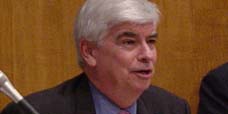 | Chris Dodd considers run for the White House
Senator Chris Dodd plans to spend the next six to eight months raising money and reaching out to Democrats around the country to gauge his viability as a candidate. Just how far Dodd can go depends largely on his ability to reach Democrats looking for an alternative to Hillary Clinton. PCOL Comment: Dodd served as a Volunteer in the Dominican Republic and has been one of the strongest supporters of the Peace Corps in Congress. |
 | Vasquez testifies before Senate Committee
Director Vasquez testifies before the Senate Foreign Relations Committee on his nomination as the new Representative to the United Nations Agencies for Food and Agriculture replacing Tony Hall. He has been the third longest serving Peace Corps Director after Loret Ruppe Miller and Sargent Shriver. PCOL Comment: Read our thanks to Director Vasquez for his service to the Peace Corps. |
 | Interview with a Hit Man
RPCV John Perkins says that for many years he was an "economic hit man" in the world of international finance whose primary job was to convince less developed countries to accept multibillion dollar loans for infrastructure projects that left the recipient countries wallowing in debt and highly vulnerable to outside political and commercial interests. In this exclusive interview for "Peace Corps Online," Colombia RPCV Joanne Roll, author of Remember with Honor, talks to Perkins about his Peace Corps service, his relation with the NSA, "colonization" in Ecuador, the consequences of his work, why he decided to speak out, and what his hopes are for change. |
 | Peace Corps stonewalls on FOIA request
The Ashland Daily Tidings reports that Peace Corps has blocked their request for information on the Volkart case. "After the Tidings requested information pertaining to why Volkart was denied the position — on March 2 — the newspaper received a letter from the Peace Corps FOIA officer stating the requested information was protected under an exemption of the act." The Dayton Daily News had similar problems with FOIA requests for their award winning series on Volunteer Safety and Security. |
 | PCOL readership increases 100%
Monthly readership on "Peace Corps Online" has increased in the past twelve months to 350,000 visitors - over eleven thousand every day - a 100% increase since this time last year. Thanks again, RPCVs and Friends of the Peace Corps, for making PCOL your source of information for the Peace Corps community. And thanks for supporting the Peace Corps Library and History of the Peace Corps. Stay tuned, the best is yet to come. |
 | History of the Peace Corps
PCOL is proud to announce that Phase One of the "History of the Peace Corps" is now available online. This installment includes over 5,000 pages of primary source documents from the archives of the Peace Corps including every issue of "Peace Corps News," "Peace Corps Times," "Peace Corps Volunteer," "Action Update," and every annual report of the Peace Corps to Congress since 1961. "Ask Not" is an ongoing project. Read how you can help. |
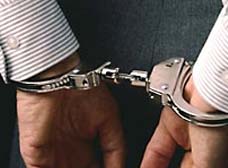 | RPCV admits to abuse while in Peace Corps
Timothy Ronald Obert has pleaded guilty to sexually abusing a minor in Costa Rica while serving there as a Peace Corps volunteer. "The Peace Corps has a zero tolerance policy for misconduct that violates the law or standards of conduct established by the Peace Corps," said Peace Corps Director Gaddi H. Vasquez. Could inadequate screening have been partly to blame? Mr. Obert's resume, which he had submitted to the Peace Corps in support of his application to become a Peace Corps Volunteer, showed that he had repeatedly sought and obtained positions working with underprivileged children. Read what RPCVs have to say about this case. |
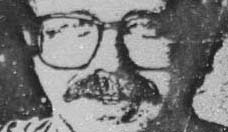 | Why blurring the lines puts PCVs in danger
When the National Call to Service legislation was amended to include Peace Corps in December of 2002, this country had not yet invaded Iraq and was not in prolonged military engagement in the Middle East, as it is now. Read the story of how one volunteer spent three years in captivity from 1976 to 1980 as the hostage of a insurrection group in Colombia in Joanne Marie Roll's op-ed on why this legislation may put soldier/PCVs in the same kind of danger. Latest: Read the ongoing dialog on the subject. |
Read the stories and leave your comments.

Some postings on Peace Corps Online are provided to the individual members of this group without permission of the copyright owner for the non-profit purposes of criticism, comment, education, scholarship, and research under the "Fair Use" provisions of U.S. Government copyright laws and they may not be distributed further without permission of the copyright owner. Peace Corps Online does not vouch for the accuracy of the content of the postings, which is the sole responsibility of the copyright holder.
Story Source: Honolulu Weekly
This story has been posted in the following forums: : Headlines; COS - Marshall Islands; Nuclear Testing; Speaking Out
PCOL33360
31














